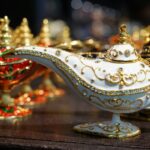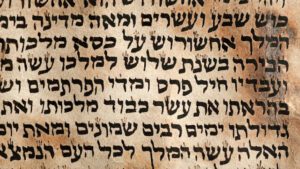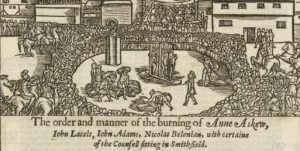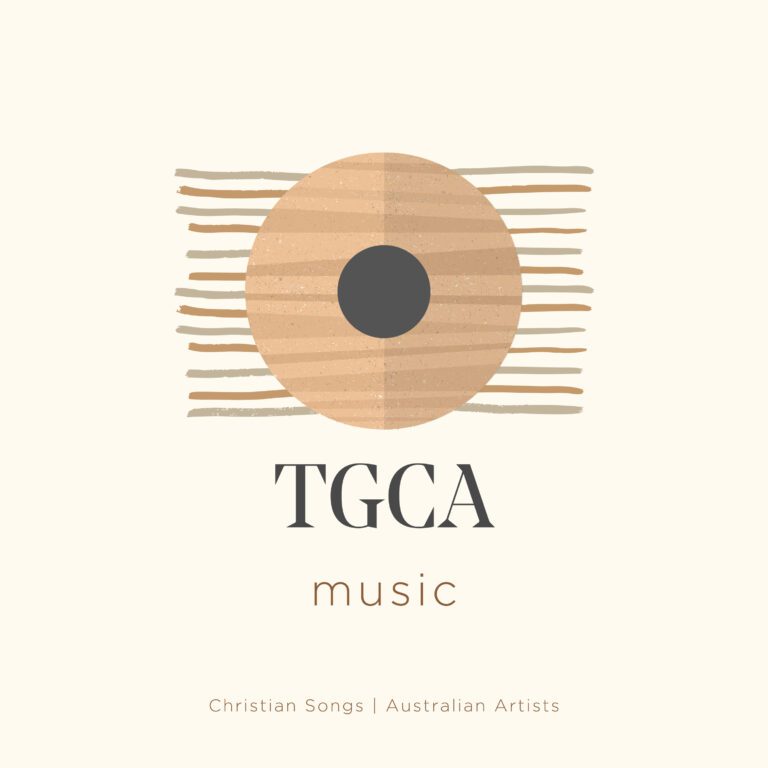Please also see this list of reminiscences from those who knew and served with Donald Robinson
Early on Friday 7 September one of Australia’s most brilliant biblical scholars and influential church leaders went to be with the Lord whom he loved and so faithfully served. If you are an Australian evangelical, you owe him a great debt, even if you’ve never heard of him. His name was Donald William Bradley Robinson. He was 95 years old.
Life of Robinson
Robinson was born on 9 November 1922 in Lithgow, NSW. His father, R. B. Robinson, was the minister at the local Anglican church. The family moved to the inner Sydney suburb of Leichhardt in 1923 where his father was the rector at All Souls. (Interestingly enough, another major figure of the post-war evangelical renaissance, Leon Morris, was brought up under R. B. Robinson’s ministry at both Lithgow and Leichhardt.)
In 1933 the family moved to Chatswood in North Sydney. This was where Robinson lived out his high school years, attending North Sydney Boys and then the Sydney Church of England Grammar School (Shore). He was not an outstanding student, but he was able to study Greek at both schools—a huge advantage to a future New Testament scholar.
At age 17, the family moved to Moore Theological College in Newtown, the Anglican training College in Newtown, next to Sydney University. It was here the diocese provided accommodation for the family as R. B. Robinson took up the role of directing the Home Mission Society. In this way, Donald Robinson, though never a graduate of Moore College, was able to access its faculty, including most notably T. C. Hammond.
At Sydney University Robinson studied Latin, Greek and English. His student days were interrupted by war service mainly in Brisbane and Papua New Guinea. He was recommended by his Greek professor to the Central Bureau of Military Intelligence to work with the code-breakers in Brisbane. His role was as a ‘traffic analyst’ which he described as ‘studying everything about the message without being able to read it.’[1] These abilities at pattern-recognition, already noted at Sydney University, would become critical to his approach to the New Testament.
He was recommended by his Greek professor to the Central Bureau of Military Intelligence to work with the code-breakers in Brisbane. These abilities at pattern-recognition would become critical to his approach to the New Testament.
In 1946, he was elected President of the Sydney University Evangelical Union (SUEU). In October of that year, he and the Vice-President, Marie Taubman, “mutually agreed” to marry one another.[2] It was 4 October 1946 at 4 o’clock in the afternoon, on the lawn outside the University Tower. They were engaged in December of that year. It was to be a long engagement, as Robinson set sail the next year for Cambridge. He had been accepted at Queens’ College to study theology.
Summer Years
Robinson described 1947 as “the summer of his life”. He travelled by boat to San Francisco, then overland to Chicago and then up to Toronto. His final destination was Boston, where he was a student representative of the International Leaders Conference of the International Fellowship of Evangelical Students at Harvard University—the conference that launched the modern form of the IFES. The meetings in Boston were chaired by the prominent Welsh preacher Martyn Lloyd-Jones, who apparently complained at the lack of a “decent cup of tea, which always makes a situation more civilised.” (Feel free to take a moment to enjoy the thought of a Brit complaining about tea in Boston). It was at this meeting that the influential IFES doctrinal basis was hammered out.
On the same trip Robinson spent six weeks leading at Christian summer camps. He established a life-long friendship with one of his fellow camp leaders, Brevard Childs. Childs went on to become an Old Testament scholar at Yale and a significant figure in the Biblical Theology Movement. They remained life-long friends.
Robinson was very deliberate in going to Cambridge in order to access the vibrant biblical scholarship being produced there. This is an interesting point of contrast with British evangelicalism. At the time, many British evangelicals went to Cambridge in spite of the Divinity faculty; Robinson went because of it. For Robinson, scholars such as C. H. Dodd and C. F. D. Moule were people with whom conservative evangelicals could have a fruitful and productive engagement.
At the time, many British evangelicals went to Cambridge in spite of the Divinity faculty; Robinson went because of it.
Donald and Marie married back in Australia on 30 July 1949. He returned with her to Cambridge where Robinson completed his studies. They came back to Australia in 1950. They had four children, Martin, Anne, Mark and Peter. Martin was born in UK, the rest in Australia.
Teaching at Moore
After ordination and two curacies, Robinson began what was to be the largest segment of his career—teaching on the faculty of Moore College. It was there, where Robinson served as lecturer and then vice-principal, that Robinson exercised his most lasting influence. Robinson introduced the College to the discipline of understanding the Bible on its own terms, seeking to uncover how the Old Testament and New Testament relate themselves to each other. By this teaching he ignited, for example, the imagination of Graeme Goldsworthy to what we now call ‘biblical theology”. Goldsworthy recalls:
On one occasion during my final year the Vice-Principal, as he was then, was lecturing us on a matter of biblical interpretation when he gave, almost parenthetically, a description of his understanding of the structure of biblical revelation…It was simple, profound, and like a bolt of lightning which produced a radical and permanent shift in my thinking on the Bible.[3]
Along with D. B. Knox, Robinson also made a significant contribution to the topic ecclesiology. From the late 1950s through to the early 1970s, Robinson brought his considerable linguistic and exegetical skills to bear on the topic of what the New Testament teaches on the topic of church. This project, conducted in conversation with wider developments in scholarship, theology and church life, led to an emphasis on the centrality and spiritual prestige of the local gathered church. It is profound work, which has influenced and been developed by scholars such as Robert Banks, Peter O’Brien and William Dumbrell, as well as a younger generation including Lionel Windsor and Chase Kuhn. This work has not only bore fruit in evangelical ecclesiology, but also helped a generation of evangelicals to be far more disciplined and linguistically rigorous in their approach to reading the Bible.
His work on the sacraments, eschatology, Israel and the Gentiles, “the faith of/in Jesus Christ” and Anglican theology and liturgy in this period were similarly profound, original and influential. To a remarkable degree, in all of these areas, his work anticipated debates that are currently being played out in contemporary scholarship.
Bishop in Parramatta, 1973–1982
In 1973, Robinson left the College to become bishop in Parramatta. It was a decision that surprised many of his friends and colleagues. For the college it was momentous news. Robinson was the most outstanding biblical scholar of his generation. His friend were concerned that the demands of church life would rob the world of someone on the brink of achieving international stature and influence as a scholar. And yet, given his teaching on the centrality of the church in the purposes of God, it is entirely fitting that he should devote his most productive years so directly to its service.
In this period, nearly two decades of liturgical work came to fruition with the publication of An Australian Prayer Book. The final product was overwhelmingly the work of Brother Gilbert Sinden and Donald Robinson. It is a remarkable example of a modern liturgy that is both theologically orthodox, plain in language and yet, at the same time, beautiful.
Archbishop of Sydney 1982-1993
On 1 April 1982, Bishop Donald Robinson was elected archbishop of Sydney. The pace of life was very demanding. Extensive travel,[4] an ambitious programme for new churches in Sydney’s west, and the regular run of an archbishop’s duties were supplemented by several significant controversies. He opposed the move toward the ordination of women to the priesthood in the Anglican Church of Australia, arguing that it would represent a fundamental breach with apostolic instruction. And he opposed the loosening of traditional Anglican forms of worship and patterns of within the diocese of Sydney. The latter caused confusion amongst many of the younger ministers, who looked to Robinson as a great theological hero, and often used the exegesis they had learned from him to argue the case for change. (For some research I was doing a few years ago, I interviewed over thirty ministers who served under Robinson. Without exception—even those who argued most passionately and disagreed most vigorously with Robinson on these matters— each continued to honour him as a great theological hero, and a man of enormous personal integrity.)
The debate over the ordination of women to the priesthood did not go Robinson’s way at the national level. On 21 November 1992 the General Synod passed the resolution to allow women priests by two votes. According to Piggin:
In the silence that followed the historic decision, Charles Sherlock from Melbourne wept. It was not for himself, as he explained to one who sought to comfort him, for he was a committed supporter of the ordination of women. He wept for the Archbishop of Sydney. To Donald Robinson himself, who also sought to comfort him, he explained that if the vote had not gone as it had, he would not have known how to comfort his wife, but because it had gone as it had he did not know how to comfort the Archbishop for whom he had always held a special affection.[5]
Many speak of Robinson’s integrity, his capacity to separate the principle from the personal, and his ability not to hold grudges as factors that won him ‘admiration from both sides.’[6]
Extraordinary Contribution
Robinson retired in 1992. On retirement the family moved to their house in Pymble. Robinson also resumed teaching at Moore College, a role he continued in until 2002. For several years, Robinson’s extraordinary contribution to scholarship and to the Church in Australia were somewhat hidden from historical view. In more recently years, however, a series of studies interacting with Robinson’s work, two festschriften, and two volumes of Selected Works (with two more on the way) have begun to bear their collective homage to Robinson’s life and influence. Countless scholarly works, from Peter Bolt, John Painter, Robert Banks and many others continue to grapple with and extend his biblical thought.
Robinson suffered the losses of his beloved wife Marie in 2014, and his much-loved son Mark in 2015.
Early in the morning of Friday, 7 September 2018, he went to be with the Lord.
We owe him more than we can tell.
“Blessed are the dead who die in the Lord from now on.” “Yes,” says the Spirit, “they will rest from their labour, for their deeds will follow them.”
Photograph: Archbishop Robinson (circled) meeting the Queen in 1977
[1] Marcia Cameron, Interview 4 with Bishop D. W. B. Robinson, 24 October 2006, 10.
[2] Marcia Cameron, Interview 3 with Bishop D. W. B. Robinson, 10 February 2006, 8.
[3] Goldsworthy, ‘The Pastoral Application of Biblical Theology’, 302.
[4] Taking the Synod Addresses as a guide, in these years Robinson travelled to every capital city in Australia, internationally to Barbados, England, Ireland, New Zealand, Norfolk Island, Singapore, USA, Israel, and Jordan. Locally, across the years 1984–1985, in order to promote ‘Vision for Growth’, he visited every parish in the diocese.
[5] Piggin, Spirit, Word and World, chap. 9.
[6] Ibid., chap 9.















